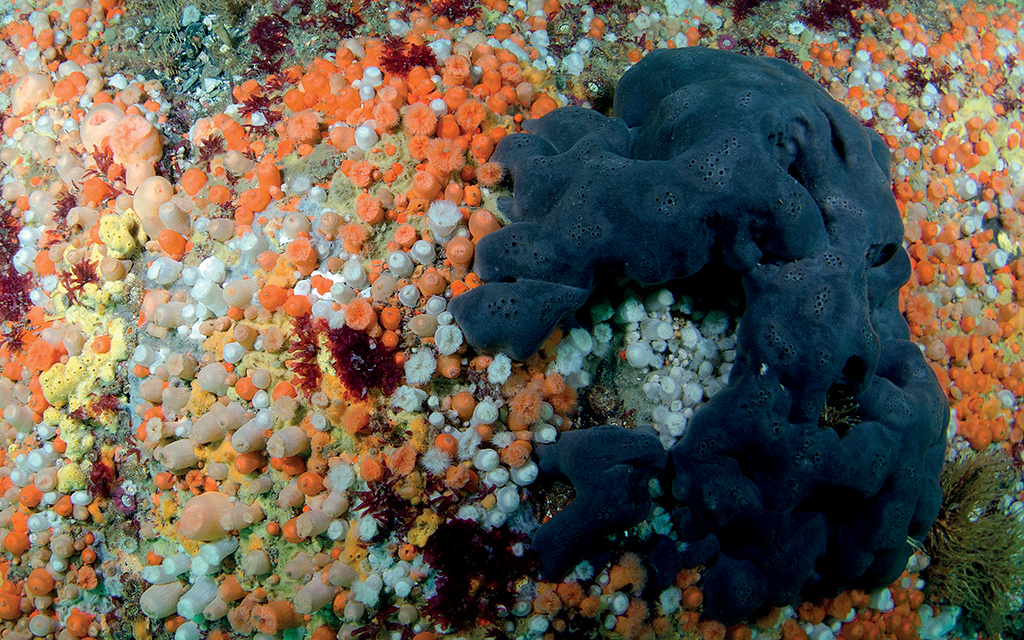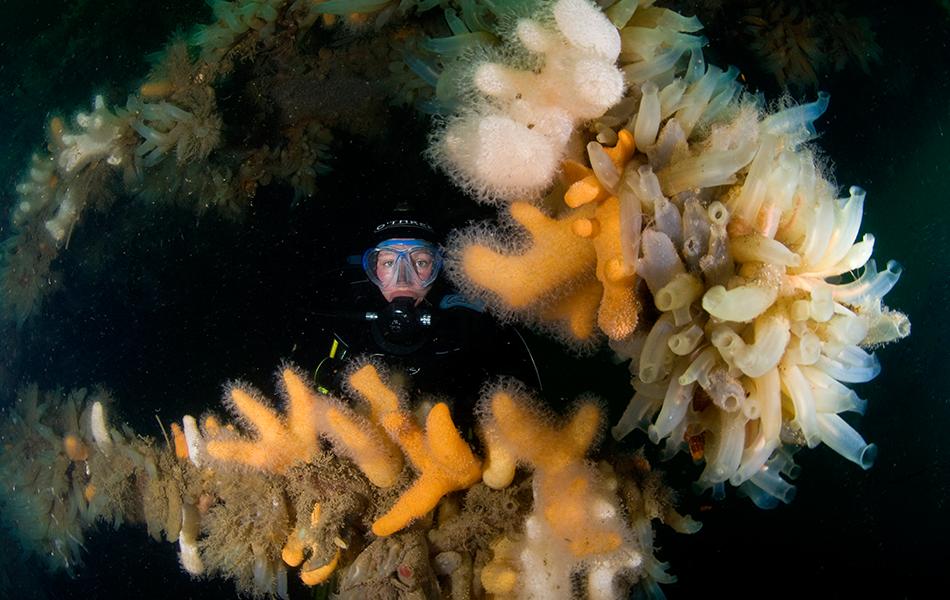
There’s a lot more to marine life classification than dividing it all into ‘wrasse’ or ‘squidge’, as Becky Hitchin explains.
As most people who read this know, identifying small critters under the water can be difficult. I say difficult, I mean frustrating, annoying, depressing – and occasionally jubilation when you actually get one right. And just when you think you’ve got to grips with one particular favourite plant or animal, you can guarantee it’ll turn up in a different colour, on a different food, and you have to rethink everything you know.
There’s an important thing to know every time you get frustrated. It’s not (always) you. Sometimes of course, it is you. There are many reasons why identification is difficult. These include divers’ innate abilities to spot interesting creatures as by-catch in downloaded photographs of large bits of metal festooned in kelp, and simple inability (normally in my case at least) to focus on what you actually need in focus rather than the broken shell debris before or after the important never-seen-before nudibranch.
But, sometimes, the critters are simply out to get you. Or, to speak more scientifically, there are a number of ecological or morphological reasons why identification of underwater plants, animals and everything else can be challenging.
1. Identification features can present seasonally
So, you have to dive at the right time to be able to see some of the features noted in identification guides. Sea cucumbers are particularly known for this. Populations of Neopentadactyla mixta, the gravel sea cucumber, have been seen to withdraw further into the sediment between 1 or 4 hours after sunrise and remain in the substratum for one or two hours, re-emerging over a period of up to four hours. In September/October the entire population withdraws into the substratum and re-emerges in March/April.
Similar things happen in Scotland with populations of Psolus phantapus, the red spotted sea cucumber. One day, a piece of a sea loch seabed in springtime will suddenly sprout these colourful sea cucumbers. They’ll be there for a month or two, then vanish. Bizarrely, 100 metres down or up the sea loch, there won’t be a single one all year. Many colonial sea squirts instead regress during the autumn / winter, which makes them look like amorphous bobs of jelly instead of blobs of jelly with interesting features such as siphons. The majority of the identification features are lost when this happens, even when specimens are taken.
2. There can be a wide range of morphologies per critter
Particularly if you’re a sponge. This isn’t just a problem for most divers and shore searchers, but professional monitoring programmes too. Let’s look at how some sponges are described. Using descriptions from habitas.com, Haliclona simulans is described as “very polymorphic, it may grow as a thin sheet or cushion or as a branching-repent or branching-erect colony”, Amphilectus fucorum, the shredded carrot sponge, as a “bright orange sponge that is extremely polymorphic and fast growing, changing shape in just a few weeks. It may be encrusting as thin sheets or cushions, massive lobose, with or without tassels, or branched”. This provides increased risk of misidentifying a taxon if someone expects an organism to have a particular morphology.
It’s not only morphologies, it’s colour too. Colour of sponges can vary according to light regime, for example Halichondria panicea, the breadcrumb sponge, on the shore can become green when inhabited by photosynthetic algae. Pachymatisma johnstonia, elephant hide sponge, can be white instead of darkish grey in cave environments (don’t go into caves to check this out unless you’re qualified!).
3. Do you get the feeling that the marine environment is out to get you yet?
There can be convergence in morphology. Similar environmental stresses can cause convergent adaptation of different species. Growth forms of two very different species can adapt to almost similar shapes under influence of similar hydrodynamic forces. There can also be cryptic species. Think nudibranchs and their ever-changing taxonomy, and the increasing number of species being split out from the good old standard species found in the original Picton nudibranch bible.
But let’s go back to sponges and an example from a well-known Seasearcher, Claire Goodwin, who was involved in separating out some cryptic species in one of my favourite sponges, Cliona celata, a common sponge around the UK. They found clear incidence of hidden species and turned the one species we know and love into four. Now not only are there two morphs, but species hiding in plain sight. New headaches. And the annoying thing about hidden species is that many are discovered using genetic / genomic identification techniques – not morphological identification or features we can see in the field. This again makes understanding what species we’re looking at challenging.
4. This is where it gets really annoying
Identification features may not even be testable from a remote platform, or even from a diver survey. Sponges can have characteristic smells. Tethya citrina, the golf ball sponge, carries the ‘interior smells’ of marine specimens which have been allowed to decay, while Suberites carnosus smells faintly of freshly cut kelp stipe.
5. Scotland is different
So is Wales. So is every part of the UK. While the UK is relatively small in terms of ocean scale temperature and current movements, there is still a latitudinal gradient from the Isles of Scilly to the Shetland Isles, with considerable variation in hydrographic conditions. Leptochiton asellus, a common chiton, has consistent colourings across the UK, apart from northern Scotland and the Orkney Islands, where there is consistently a very different colouring.
6. Covering all the rest of the confusion
Identification features sometimes are only present during a proportion of the life cycle, whether that be as juveniles / adults, or whether an organism is feeding or not. The anemone genus Urticina (dahlia / horseman anemones) in UK waters contains two species that are very similar when the tentacles are displayed. It is only when the tentacles are withdrawn and the column exposed that confidence can be had in separating U. felina and U. eques. The same confusion crops up with more anemones, including the yellow and white Actinothoe sphyrodeta (stripy column) and the yellow and white Cylista elegans, or elegant sea anemone, with its spotty column. Sometimes all you need is to switch countries. Many nudibranchs are very similar looking, and it doesn’t help when Coryphella rufibranchialis in the UK is sometimes, maybe, often known as Coryphella verrucosa in Norway. Depending on who you ask. When people say that scientific, or Latin, names prevent all the confusion produced by use of common names, 99% of the time they are entirely right. But scientific names evolve and are debated fiercely every day, and during times of flux, it can still get tricksy. You name it, there will be a difference. It’s annoying, it’s frustrating. But it’s amazing and shows the incredible diversity of life in our waters. Embrace the diversity, the everchanging names and features as part of the wonderful world of underwater life.
Article ‘Diversity: the i-d parade’ by Becky Hitchin, first published in SCUBA magazine, Issue 141 December 2023.

 Author: Becky Hitchin | Posted 15 Dec 2023
Author: Becky Hitchin | Posted 15 Dec 2023



